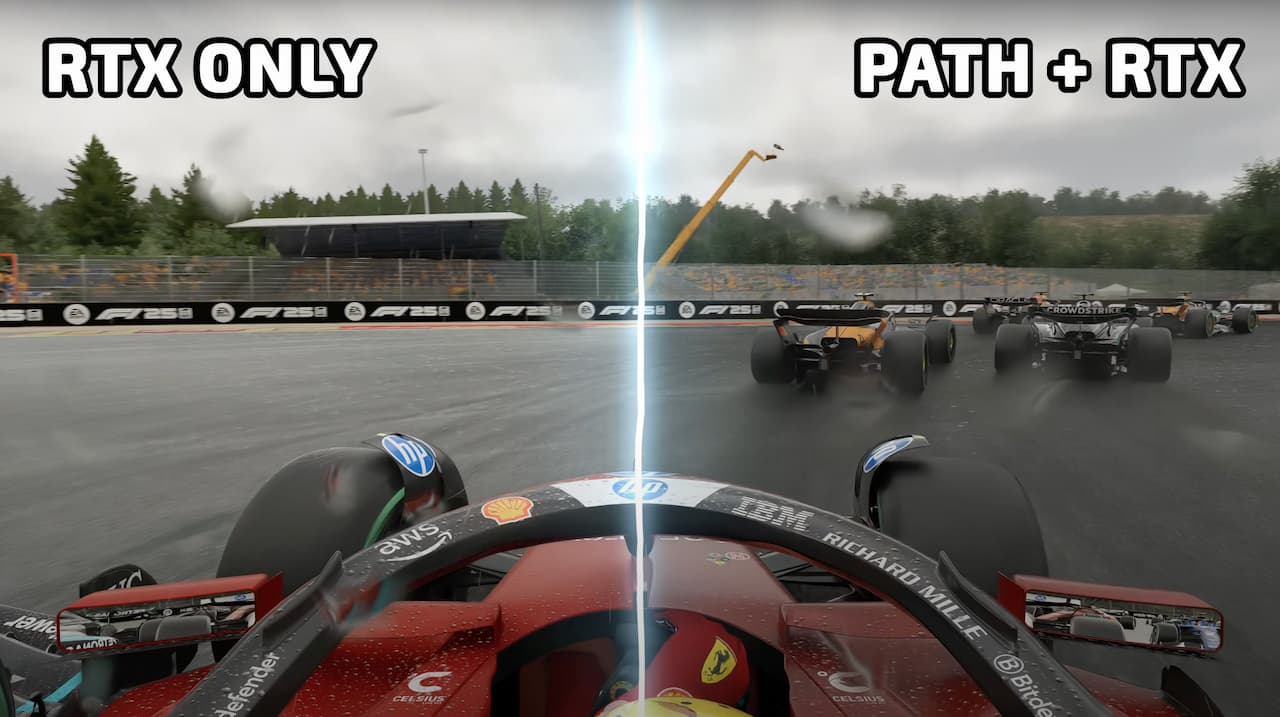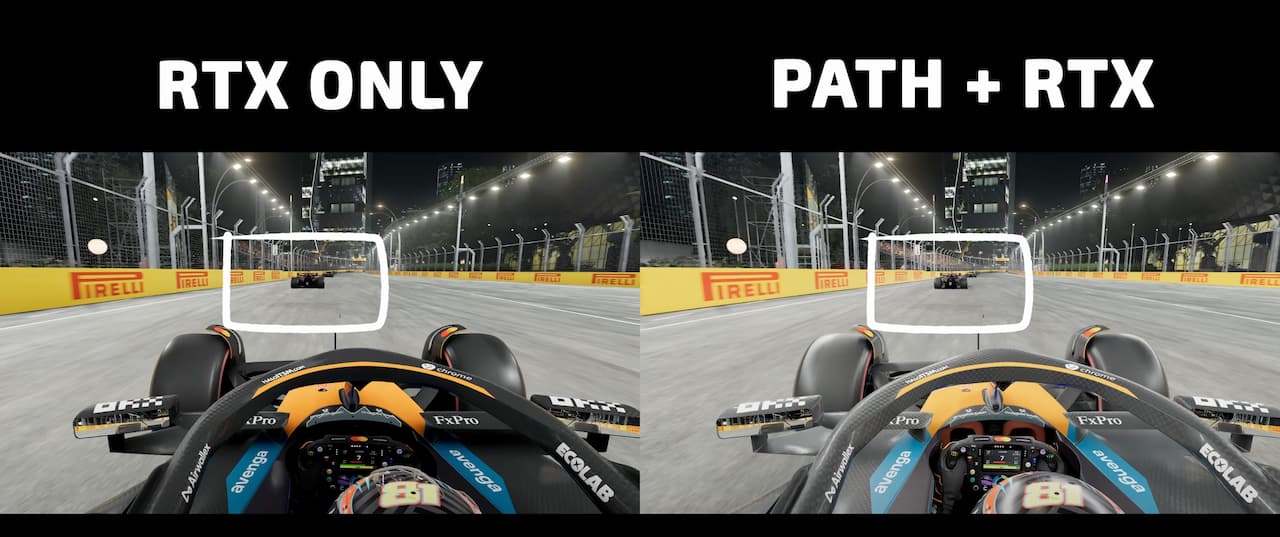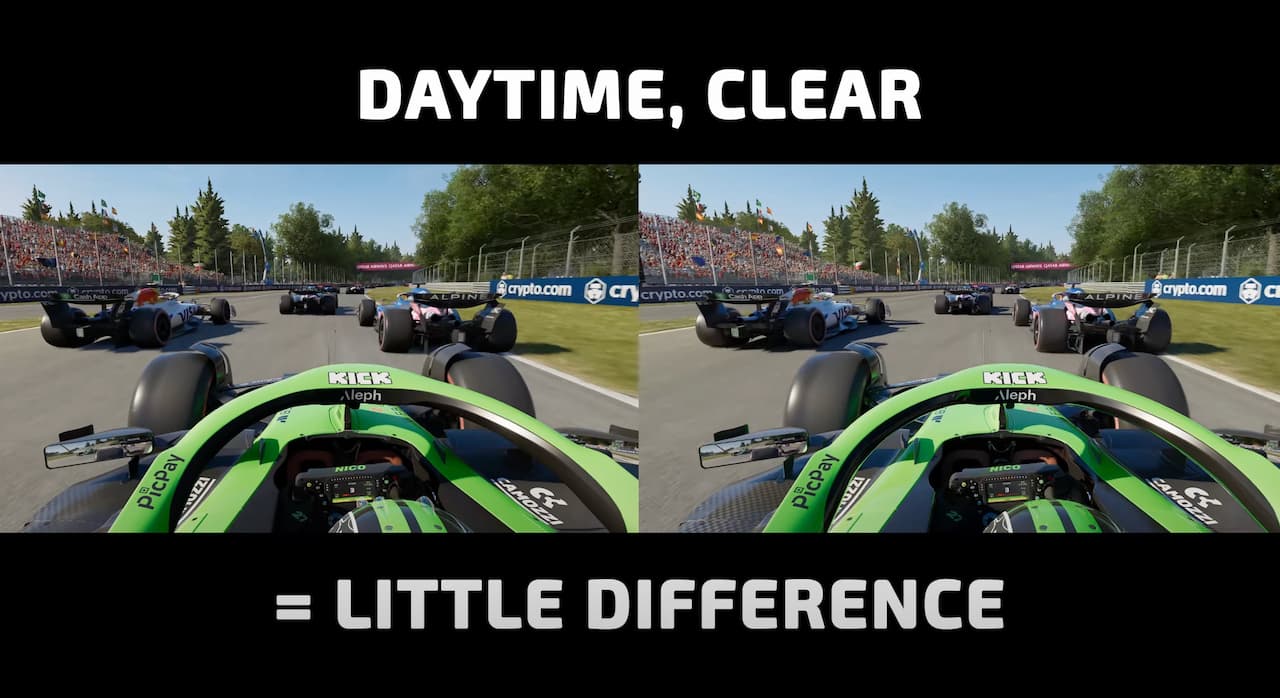Chapters
Expand CollapseFirstly, the graphics are stunning in this year’s F1 edition. F1 25 brings racing fans not just intense on-track action but also a leap in visual quality. With the addition of path tracing support, there’s a lot of curiosity about how this advanced lighting feature stacks up against the regular ray tracing that’s become more common in many recent games. If you’re weighing up which setting to use for the best mix of realism and smooth performance, you’re in the right place. Let’s look at how F1 25 path tracing compares to standard ray tracing across various conditions, and look at the best settings for a great racing experience.
What’s the Difference Between Path Tracing and Ray Tracing?
Ray tracing, present in top games for a while now, simulates how light bounces around a scene, giving reflections and shadows that look much better than older techniques. Path tracing is a step further. It calculates even more light paths for each pixel and creates scenes that more closely match real life, especially when it comes to softer shadows and more natural indirect lighting.
In F1 25, both features promise to enhance the look of the cars, tracks and weather effects, but how much does path tracing improve things in actual gameplay?

How Does Each Look?
The biggest differences stand out when the lighting and weather get tricky, like in night races or wet weather. With just ray tracing switched on, cars can appear unnaturally detached from the track, almost like they’re floating. Pay close attention to the tyres and the way shadows hug the car. Shadows can also get too dark and lose the detail that gives an authentic sense of weight and contact.

Switch on path tracing and these details come to life. Tyres now look properly grounded, shadows are more balanced, and you get a realistic gradation where the car meets the road. During night races, you’ll spot a big improvement in how car lights scatter and how subtle reflections pick up details you might have missed before.
Importantly, during clear day races, the gap between ray tracing, path tracing, and even turning both off narrows. F1 25’s graphic engine does a solid job in daylight as shadows and reflections are already pretty true-to-life. This means if you want to prioritise performance over visuals in daytime, you can dial things back without missing much.

My Recommended F1 25 Graphics Settings
To help F1 25 run smoothly without losing the wow factor, here’s what’s worked for my rig. With these settings, I get a solid 60 FPS and impressive visuals, even with both path tracing and ray tracing enabled.
- DLSS: Set to Performance for better frame rates
- Crowd Quality: Lowered to save resources
- Trees and Vegetation: Reduced detail for better performance
- Skid Marks: Lowered as these have less visual impact
- Hair Quality: Lowered, which doesn’t hurt realism much
- Variable Rate Shading: Switched off for more stable images
You can see visuals of my graphic settings in the video at the top of this article. For reference, if you’re curious about my gear and want to aim for a similar setup, you can see my full list of racing and PC gear and motion simulator kit used in F1 25.
So, Path Tracing and/or Ray Tracing in F1 25?
If you’re after the absolute best visuals, especially in wet or night races, F1 25 path tracing is worth switching on if your graphics card can handle it, as well as having ray tracing on. The cars look more anchored to the track, and the lighting is less harsh and more lifelike. Still, the standard ray tracing holds up well and runs smoother on many systems. For daily play, you might not spot big differences in dry, daylight races, so choose what feels smoothest for your rig.
Final Thoughts
Path tracing in F1 25 lifts the realism, especially when the lighting gets dramatic. For the most consistent visuals, it’s a solid pick if you can spare the performance. Still, ray tracing is no slouch and offers great quality at a lower cost to frame rate. Try out the recommended settings above to see what feels best during your own race weekends.
Got a question about F1 25 path tracing, your setup, or anything else racing game-related? Drop a comment on the YouTube video or share your thoughts. Helping each other find the perfect balance makes racing even more enjoyable.


